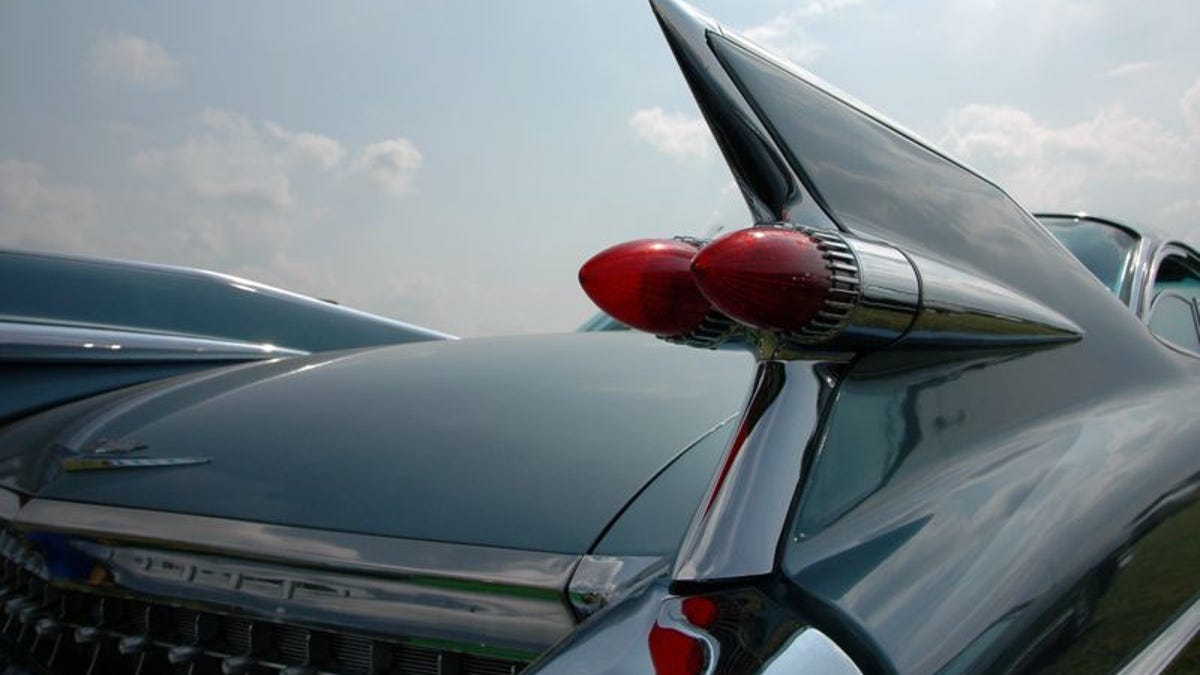Tail Fins!
A short look at a styling fad that will hopefully never come this way again: the 1950s tail fin.

Nothing quite says "1950s' excess" like huge tail fins. Well, except maybe for acres of bright, shiny jukebox chrome. And exaggerated bumper bullets. No comparable trick has been used in automotive styling, except perhaps the picnic table-sized wings that were in vogue on cars like the Subaru WRX and Mitsubishi Lancer Evo a few years back.
Oversize wings besotted somewhat a smaller number of cars than the fins of 50 years before, but both fashions stem from motorsports. Hey, if it looks like it won on Sunday, maybe it'll sell on Monday...
Today, most varieties of pure racing cars use wings (with an upside-down section comparable with those on an aircraft) to generate downforce that more than counteracts any tendency of their bodies to lift off the track at high speeds. This allows high levels of traction and high cornering speeds, but at the penalty of much-increased drag, which may not matter much on a 900-horsepower Formula One car, but won't help the fuel economy of a road car a bit, even at a mere 80 mph.
Fins on race cars came about to provide aerodynamic stability at high speeds. For stability, the center of pressure needs to be behind the center of gravity; hence, tail feathers on arrows, tails on aircraft, and fins on land speed record cars as far back as the 1920s. When sports-racing cars became capable of speeds in excess of 150 mph--Jaguar D-Types were capable of 180 mph on the Mulsanne Straight at Le Mans--aerodynamics became critical. The Jaguars were the most famous finned 1950s racers, but they were not the only ones. And although fins lost favor when rule changes slowed cars in the late 1950s, they staged a minor resurgence in the late 1960s on both the 427-cubic-inch Ford GT Mk2s and some long-tail Porsche 908s and 917s.
The most outrageous finned concept cars were created by Italian styling house Bertone on Alfa Romeo chassis in the early 1950s. They weren't raced, and were only styling exercises, although the wraparound fins on the BAT 7 might actually have generated a little downforce.
On the road, the award goes to Virgil Exner for styling. His work for Chrysler in the late 1950s produced classics like the later examples of the 300 series. Only Cadillac was comparable. Even Mercedes-Benz got into the game, although in a very understated manner compared to the Americans. Imagine the Europeans copying the Americans today...
By the early 1960s, the fin fad had run its course. Retro-styling trends so far haven't resurrected them. Perhaps we're lucky.